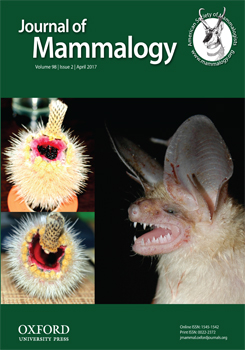The abundance of tree seeds is a key parameter affecting the abundance and fluctuations of rodent populations. Nevertheless, despite extensive research on the relationships between seeds and rodent populations, we have an inadequate understanding of the demographic mechanisms by which seed abundance influences population density and population growth rates. To help fill this gap we addressed 3 hypotheses: 1) seed abundance affects individual survival, 2) seed abundance affects recruitment, and 3) seed abundance affects both survival and recruitment. We used data from a long-term (33 years) population study on red-backed voles (Myodes gapperi) in the Holt Research Forest, a mixed deciduous-coniferous forest located in Arrowsic, Maine, United States. We found strong empirical evidence that different tree seeds affected the vole populations differently and that these effects were strongly dependent on vole population density. We found that white pine (Pinus strobus) seeds were particularly important when vole density was low and their main effect was to increase recruitment. Conversely, paper birch (Betula papyrifera) seeds became important only when density was high and exerted their effects mainly by affecting survival. Our results advance our mechanistic understanding of the interactions between seeds and rodents and thus contribute to our understanding of the complex phenomena of rodent population fluctuations.
BioOne.org will be down briefly for maintenance on 17 December 2024 between 18:00-22:00 Pacific Time US. We apologize for any inconvenience.
How to translate text using browser tools
28 January 2017
Demographic mechanisms linking tree seeds and rodent population fluctuations: insights from a 33-year study
Ryo Ogawa,
Alessio Mortelliti,
Jack W. Witham,
Malcolm L. Hunter
ACCESS THE FULL ARTICLE

Journal of Mammalogy
Vol. 98 • No. 2
April 2017
Vol. 98 • No. 2
April 2017




